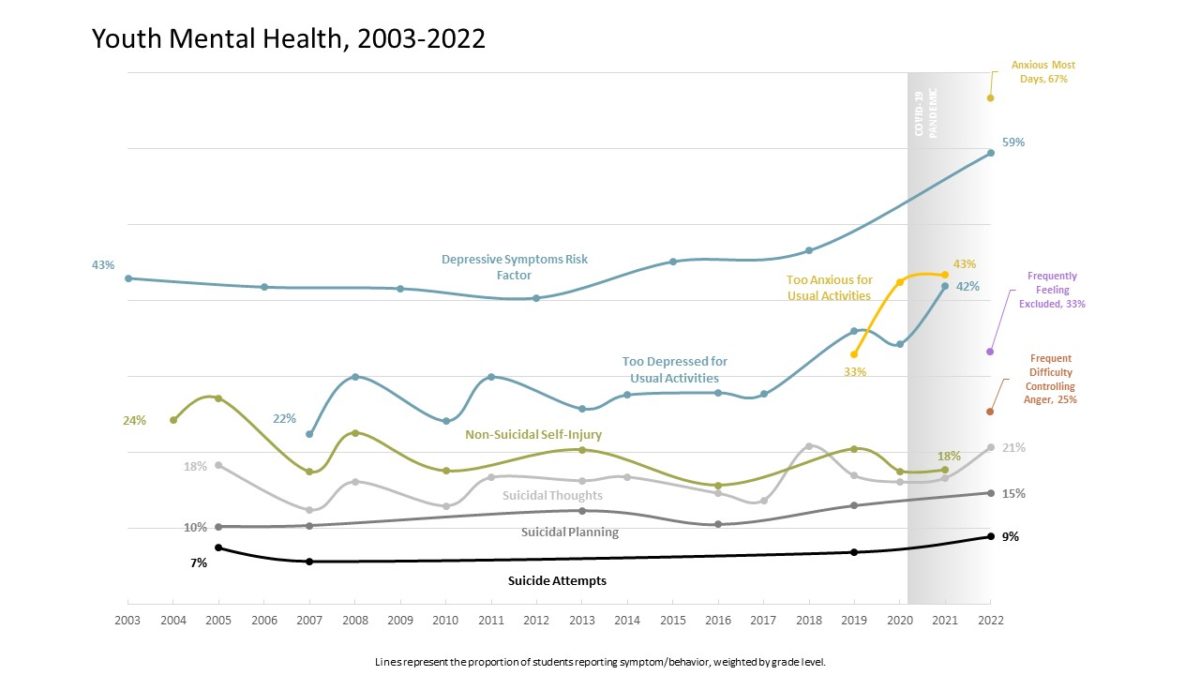CTC Releases 20th Annual Student Health Survey Results


Over the holiday weekend, the Communities That Care Coalition released the results from their 20th annual survey of middle and high school students in Franklin County and the North Quabbin region. Nearly 1600 students throughout 9 public school districts participated in the survey this past spring, adding to a wealth of information on substance use, mental health, and the rapidly changing landscape of pressures youth in the community are facing.
Encouragingly, drug and alcohol use among local youth has declined dramatically over the last two decades, falling to all-time lows in the height of COVID-19 pandemic restrictions, and remaining at-or-below pre-pandemic levels as in-person activities have largely resumed. Even vaping – which appeared suddenly in recent years and increased sharply to nearly a third of all students using vape products in 2018 – has since dropped to less than a fifth of students.
Cannabis use, however, has declined less than other substances, coinciding with students’ attitudes about its risks relaxing considerably. With a suite of major state policy changes since 2012 and a multi-billion-dollar commercial industry with highly-visible advertisement in its wake, students are acutely aware of new norms. “We do what adults do and what people who we think are responsible do”, said a local middle school student participating in a recent focus group on substance use. “If we think it’s cool or respectable, we want to replicate that behavior because that might make us cool or respectable.”
This year’s survey included an additional look at over 30 risk and protective factors that increase or decrease the chances of substance use, school dropout, teen pregnancy, violence, and mental health issues. These factors were last included in the survey back in 2018 – before the COVID-19 pandemic isolated youth and made them even more dependent on screens. Perhaps not surprisingly, overall protective factors have declined, a demonstration of just how much the pandemic continues to undermine young people’s systems of support.
Arguably the most palpable toll reflected in the data is on mental health. Indeed, symptoms of depression and anxiety among students had already been escalating since 2015, but have now skyrocketed to more than half of all students reportedly feeling sad or depressed most days, and two-thirds of students feeling anxious or worried most days. Further, relatively few students are feeling acknowledged for positive social interactions and achievements at home or in the community; and despite ample praise received at schools, students are feeling less committed than ever to their school.
There are many efforts underway in the community to support youth mental health, including expanded access to clinical therapies; LGBTQ+-affirming social groups; evidence-based social and emotional skill-building programs in local schools, arts programs, sports programs, peer-to-peer supports, and more. In the data release, the Coalition also underscored the importance of family attachment – a measure which the Student Health Survey data shows has improved considerably locally over the last 20 years. Contrary to what parents may think at times, the importance of young people feeling connected and supported at home cannot be understated, and is strongly correlated with improved mental health.
A slide show, narrated video presentation, and other materials for the 2022 Student Health Survey can be found at CommunitiesThatCareCoalition.com/Surveys.
